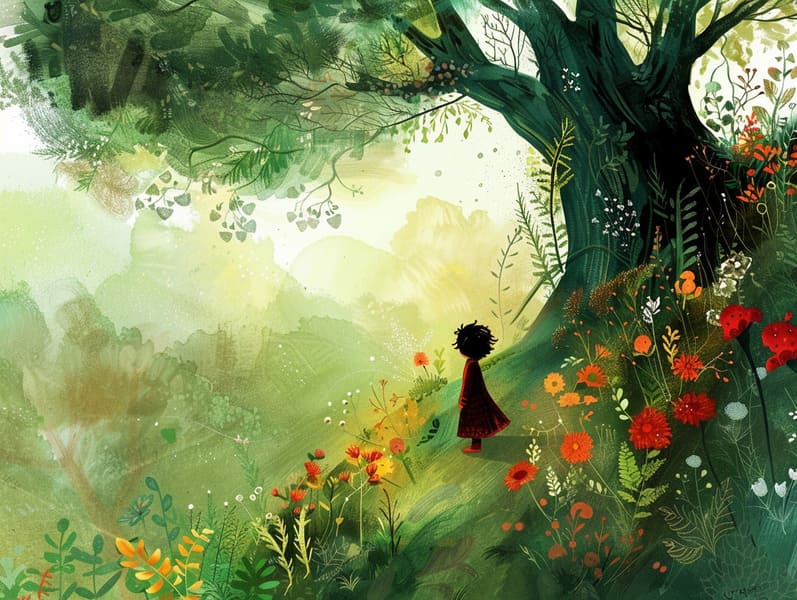The Start of Short Fairy Tales and the Ageless Splendor.
The Start of Short Fairy Tales and the Ageless Splendor.
Blog Article

Short fairy tales have deep roots. These tales have been recounted from one generation to the next ages before they were ever written down. They developed from a variety of civilizations, including American traditions. They were initially passed along among mature audiences, often carrying themes and messages aligned with the societal norms and beliefs of the time.
The famous Grimm duo, Jacob and Wilhelm, were among the first to compile many of these beloved stories. Their compilation, "Grimm's Children's Stories," included tales like "The Story of Cinderella," "Little Brother and Little Sister," and "The True Story of Snow White," which have since become cornerstones in the world of iconic fairy tales. Similarly, Hans Christian Andersen's magical fairy tales, such as "The Mermaid," and "The Ugly Duckling," have won hearts worldwide, ensuring their place in the pantheon of beloved fairy tales.
Despite their ancient origins, these tales remain as important as ever, especially as children's bedtime stories. These magical stories are now available in many formats, including colorful picture books, captivating animations, and digital storybooks.
Their continued relevance can be ascribed to several whimsical characteristics:
Valuable Lessons: Timeless fairy tales often provide important moral lessons. Stories like "The Shepherd Boy and the Wolf" teach the benefit of truthfulness, while "The Story of the Tortoise and the Hare" illustrate the benefits of determination and humbleness. These tales offer young readers clear distinctions between truth and falsehood, forming their moral compass in a subtle yet impactful way.
Kindness and Comprehension: Ancient fairy tales frequently illustrate beings facing trials and tribulations, prompting readers to resonate with their struggles and root for their triumphs. For instance, "Beauty and the Beast" conveys the virtue of appreciating inner worth to comprehend the inner being of a being, nurturing empathy and appreciation.
Cultural Perception: Many ancient fairy tales are infused with the cultural contexts from which they came. Engaging with these fairy tales can provide captivating looks into different cultures, promoting a sense of world appreciation and discernment.
Fantasy and Innovation: The fantastical elements in traditional fairy tales—enchanted objects—invigorate children’s fantasy worlds. These stories bring readers to mythical realms, motivating creative ideas and a sense of excitement that remains a lifetime.
Classic fairy tales are not only spellbinding but also didactic. They serve as bewitching tools in enhancing various mental and emotional abilities in little ones. When timeless fairy tales are spoken out loud, they boost verbal development by introducing new vocabulary and intricate sentence structures. This practice also advances auditory skills and mindfulness, as young readers pay close attention, expectant to see what happens next.
Furthermore, reflecting on the themes and characters of timeless fairy tales can cultivate cognitive skills and logical thinking. Little ones learn to discover patterns, foresee events, and grasp cause and effect. These conversations also support young ones convey their thoughts and feelings, promoting their emotional intelligence.
In today’s technological era, the existence of digital fairy tales has made these narratives more reachable than ever. Web platforms and digital apps feature vast collections of Grimm's fairy tales that can be read or listened on anytime, anywhere. Fairy tales read out loud are particularly prevalent, presenting an interactive way for young ones to relish these enchanting tales. Spoken stories and read-out-loud stories take characters and settings to life, often complemented by whimsical melodies and tunes that enhance the tale experience.
The unfading fascination of old fairy tales lies in their ability to transform to modern times while keeping hold of their central values. Contemporary takes of these stories often introduce more multicultural protagonists and modern settings, making them understandable to today’s audience. However, the core values of guts, sympathy, and fairness remain unchanged, continuing to connect with listeners of all ages.
Timeless fairy tales also offer a sense of coziness and knownness. They impart upon a ordered narrative with a obvious beginning, middle, and end, often winding up with the culmination of conflicts and the triumph of good over bad. This predictability can be encouraging for little ones, proffering a sense of consistency in an unpredictable world.
Old fairy tales continue to mesmerize and inform new generations, maintaining their elegance and meaningfulness in modern society. As children's bedtime stories, they serve a perfect blend of allure and teaching, enhancing moral values, empathy, and creativity. The presence of online storybooks and the favor of fairy tales recited validate that these timeless fairy tales remain reachable get more info to new generations.
By maintaining and imparting these narratives, we continue to commemorate the rich tapestry of fantasy and cultural heritage. Whether you are enjoying a colorful picture book, accessing a web-based library, or listening to an audiobook, the beauty of timeless fairy tales is always within reach. These narratives convey of the immortal impact of stories and its ability to link us across epochs and places.
Even if you are enjoying a gorgeously illustrated book, browsing a web-based library, or listening via an sound book, the spell of classic fairy tales is always within reach.
These stories show us of the invariable influence of storytelling and its ability to bring us together across epochs and places, casting a charm that captivates and teaches alike.